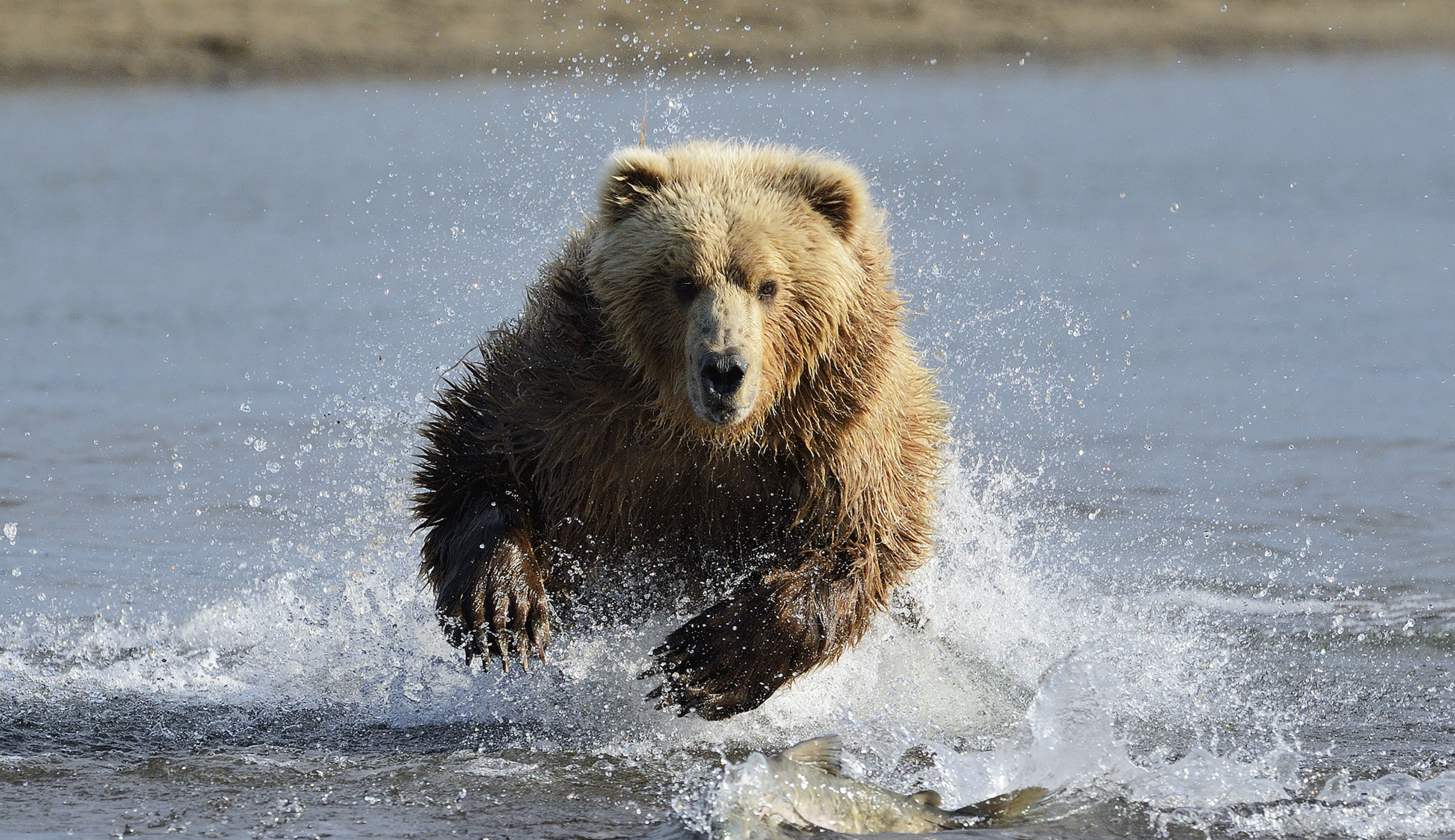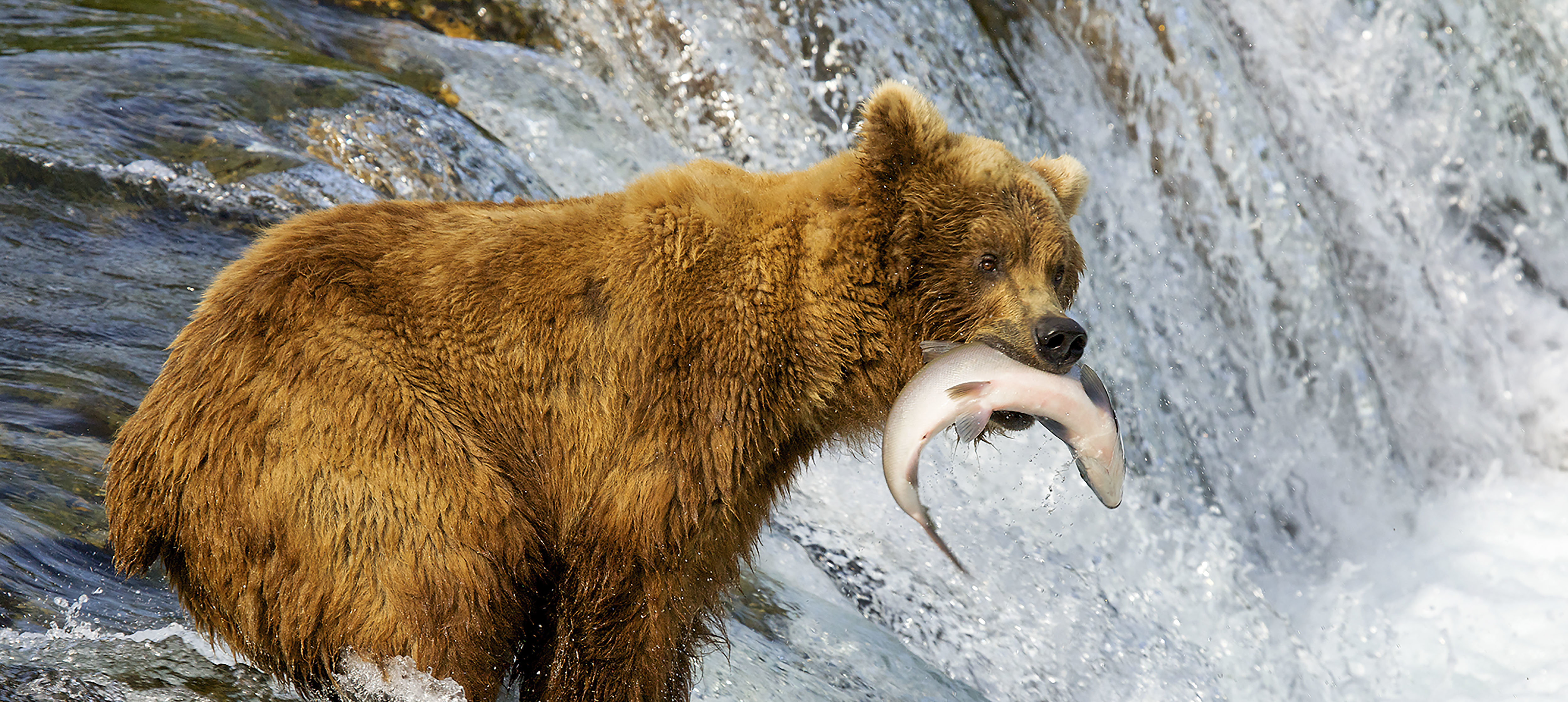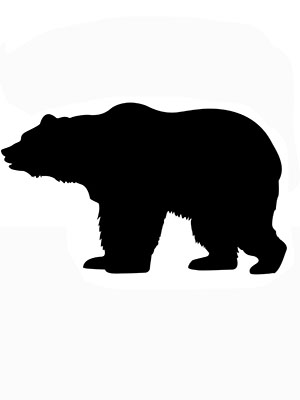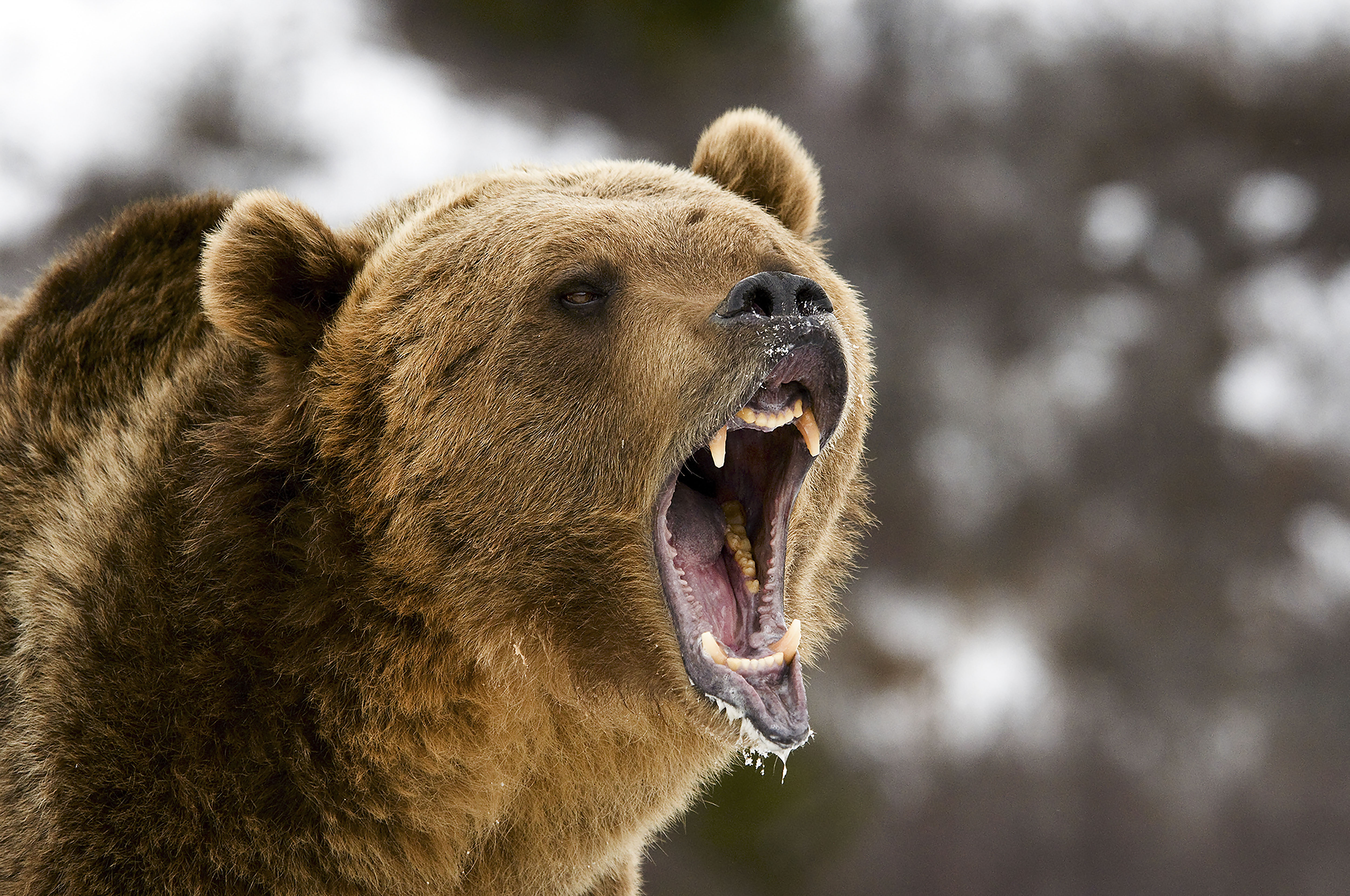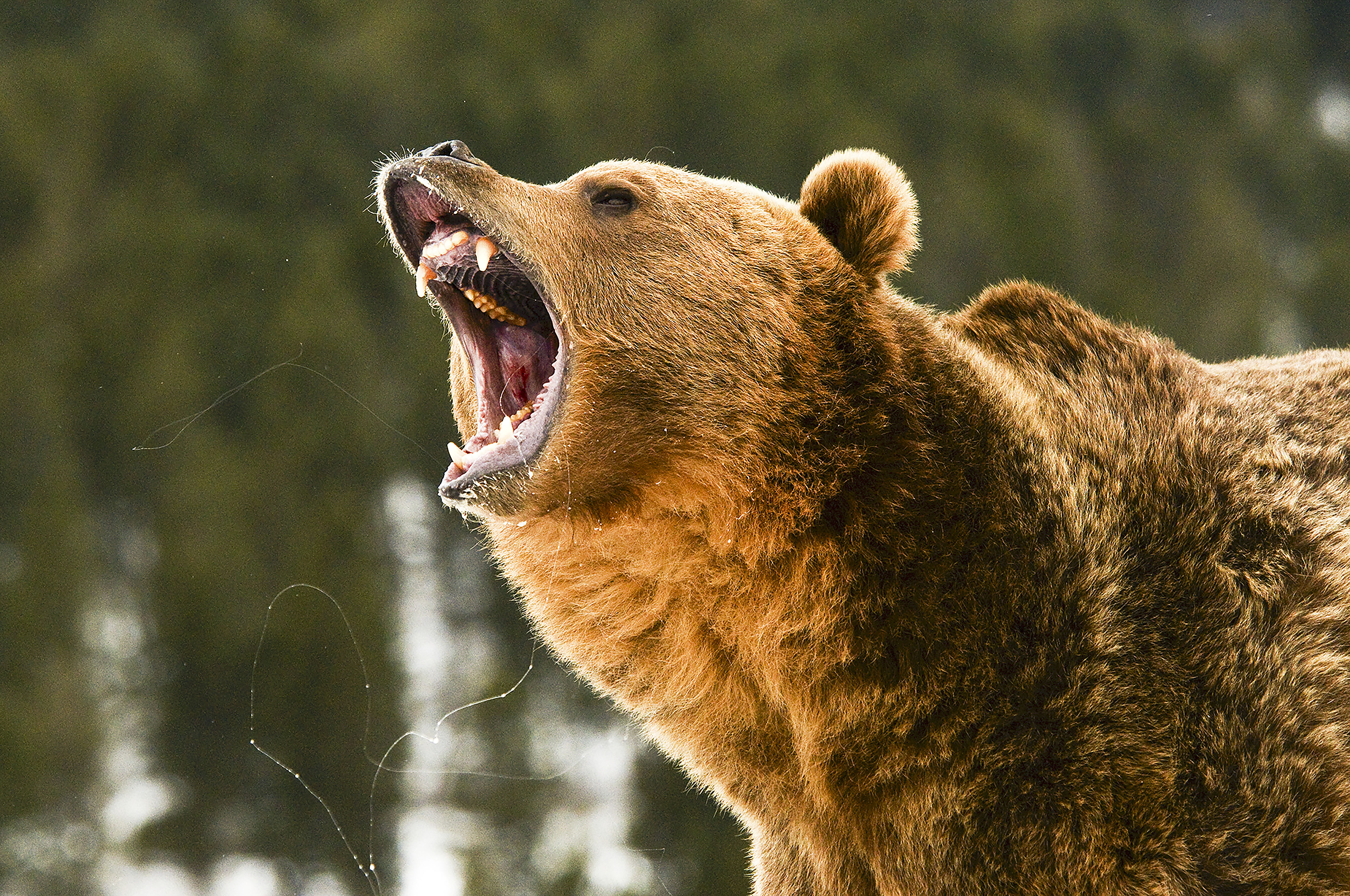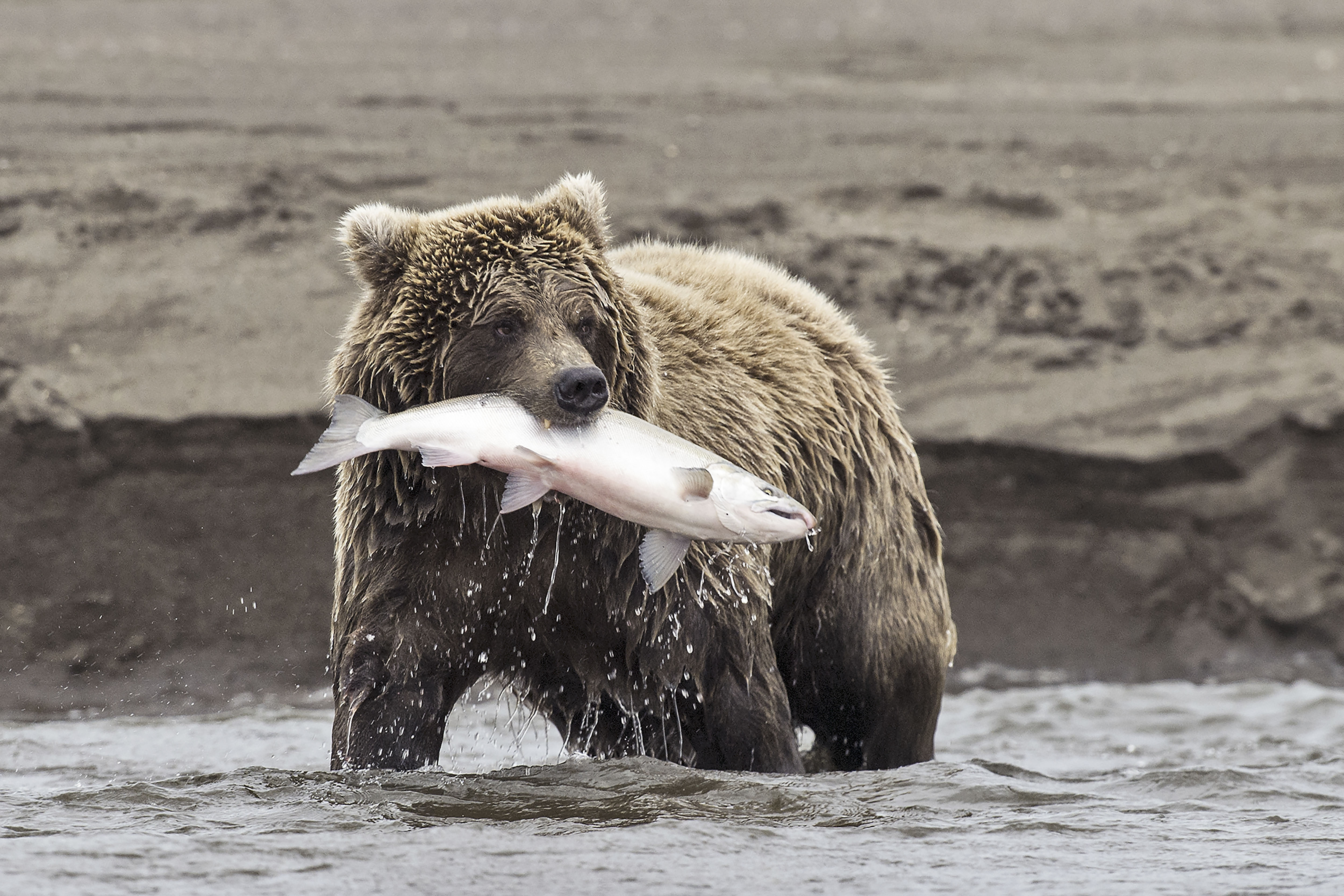Grizzly Bear
(Ursus arctos)
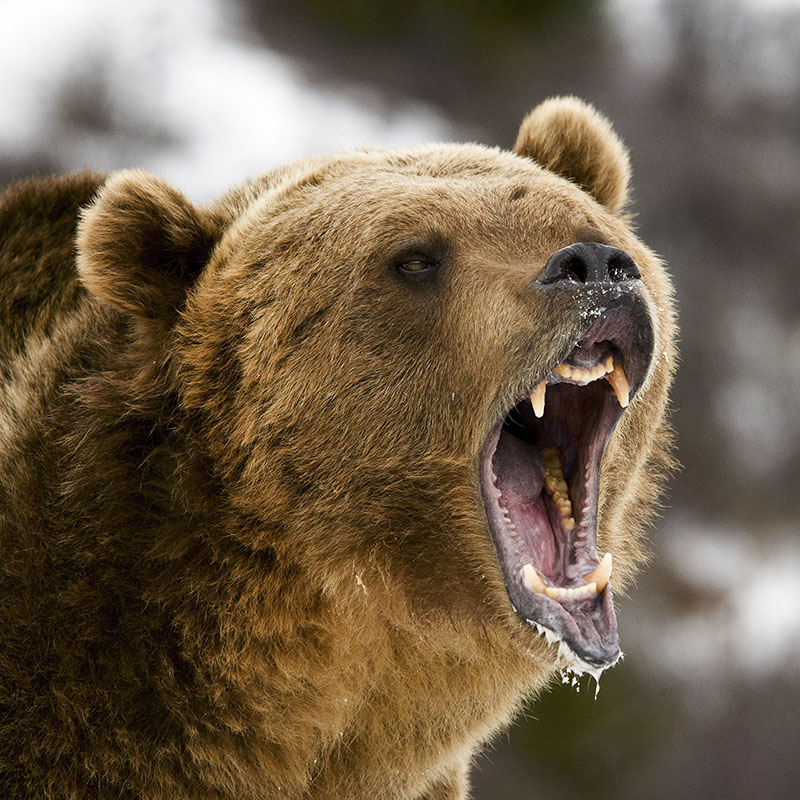
Alaskan North Slope Coastal Tundra
STATISTICS
Height up to
150 cm
Length up to
2.8 m
Weight up to
600 kgs
Lifespan
30 years
Solitary - Keen Sense of Smell - Experience Torpor - Good Swimmer
The Grizzly bear thrives in a variety of habitats from deserts to high mountain forests and even ice fields. It is one of the largest living carnivores on Earth, is extremely strong and has exceptional endurance. Males fight over females during the breeding season. Gestation is up to 266 days, and the female gives birth to 2 – 3 offspring per litter.
This species is mostly active during the early morning and early evening, spending the rest of the day resting. The Grizzly bear moves seasonally to find food such as salmon and berries and is not territorial but is solitary. It eats almost anything from plant matter including berries and nuts to fish (such as salmon) and will hunt larger mammals such as moose, sheep and elk.
It can be found in groups around food sources where a hierarchy emerges. The largest male bear becomes the most dominant while females with young become the most aggressive. This species communicates through smell and sound and has an excellent sense of smell but poor eyesight.
The Grizzly Bear goes through a period of inactivity from October to December where it falls into a deep sleep allowing its body temperature to drop a few degrees, known as torpor. This sleep is not true hibernation as they can wake at any time. They often sleep in dens which they have dug under a tree or rock.
BIODIVERSITY BENEFIT
Prey Population Control - Seed Dispersal
THREATS
Habitat Loss
Due to mining, logging and human population expansion.
Hunting
Hunted for sport.
PROTECT THE WILDARK 100
